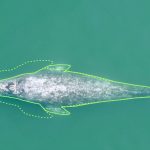Ancient large kangaroo moved mainly on four legs, shows study
A type of extinct kangaroo that lived during the Pleistocene around two and a half million to 10 thousand years ago, known as the...
Ants on the move: How invasive ants hitchhike on cars
Invasive ants have found a surprising new way to travel: hitchhiking on everyday vehicles.
Research shows that these ants pack up their entire colony, including...
How to stop cats from scratching your furniture
Many cat owners know the frustration of finding torn cushions, carpets, and couches due to their cats' scratching.
While scratching is a natural behavior for...
Wild bats show surprising cognitive abilities once thought exclusive to humans
Researchers at Tel Aviv University have discovered that wild Egyptian fruit bats possess high cognitive abilities previously believed to be unique to humans.
This study,...
You don’t need to be perfect: New study shows animals use “good enough” strategies...
For decades, scientists have thought that animals, including humans, use the best possible strategy to complete tasks like finding food or navigating a maze.
These...
World’s smallest elephants declared endangered: urgent action needed to save Bornean elephants
A newly confirmed subspecies of elephant, the Bornean elephant, has been listed as endangered, putting it at risk of extinction.
These elephants are smaller than...
Scientists map the genome of the last wild horse species
Researchers from the University of Minnesota have achieved a significant milestone by mapping the complete genome of the Przewalski's horse, the last wild horse...
Underwater robots discover giant egg-brooding squid in deep sea
The deep sea is Earth's largest living space, but many of its inhabitants remain a mystery.
Advanced underwater robots from the Monterey Bay Aquarium Research...
Pacific coast gray whales have become 13% shorter, shows study
Gray whales that feed along the Pacific Northwest coast have become 13% shorter over the past 20-30 years, according to a new study from...
Amazing new deep-sea creatures discovered in the Pacific Ocean
During a recent deep-sea expedition, scientists discovered a variety of incredible new species, including transparent sea cucumbers, bowl-shaped sponges, and pink sea pigs.
The 45-day...










